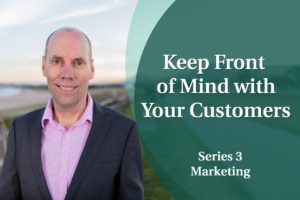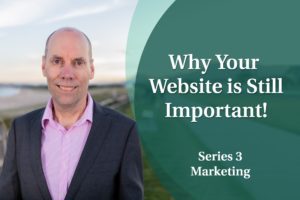
The True Cost of Discounting
by Phil Latz
Think of the times have you been a customer finalising the purchase of a large ticket item such as a car, household appliance or piece of furniture.
You have in your mind a figure of what you’re happy to pay. It may even be the full asking price. But without you even asking, the salesperson offers you a discount that brings the price to below the price you were fully prepared to pay.
Then of course you said to the salesperson, ‘No, wait! I was actually prepared to pay this much’ …and a pig flew across the sky.
There have been whole books written about negotiating, probing for customer objections and closing the deal. That’s all beyond the scope of this article, in which I’m going to show you the true cost of discounting by focusing upon your favourite subject, maths!
As someone who ceremonially burned all his schoolbooks the day school was finally over (home incinerators were still legal in those days) I sympathise if this is not the most exciting subject, but if you want to increase your profitability, it’s important to understand the key principles.
Suppose you have some bikes on your shop floor that you decide to discount by 20%. How many more bikes will you have to sell to achieve the same total dollar amount of gross profit as you would have if you sold them for full retail price?
A common instinctive answer is, ‘I’d have to sell 20% more.’ But that answer is not just a little bit wrong, it’s way out! How much? That depends upon the starting gross margin you’re discounting from.
Time for definitions of two key terms that get used a lot by bike businesses, mark up and margin (often called gross margin).
As an example, if you buy a bike for $1,000 and sell it for $1,500 your mark up is $500 or 50% but your margin is only 33.3%. The margin is always lower than the mark up.
That’s because margin is calculated by taking the mark up amount, $500 and dividing it by the retail price $1,500, which gives you 0.33 (rounded) or 33%.
If you were to buy a product for $1,000 and sell it for $2,000 your mark up would be $1,000 or 100% and your margin would be $1,000 divided by $2,000 which equals 0.5 or 50%.
If you look at the table (‘Discounting Your Prices’) you’ll see that if you were to discount your bikes by 20% and the starting margin was 35%, a not uncommon mid-range margin on complete bicycles, then you’d actually have to sell 133% more bicycles to make the same dollar value gross margin. So for example, if you were likely to sell 10 bikes at full price, you’d now have to sell 23 bikes. (ie 10 + 133% x 10 = 23 (rounded)).
‘But I had to clear those bikes!’ I hear you say. Followed by a reason such as:
- If I lose the sale, my competitor down the road will get it.
- I need the cash to pay bills.
- It’s the end of model year and the bike will be worth even less next month.
- If I get that customer on board, they’ll spend a lot more with me over the years on P&A, servicing, bike upgrades etc.
- I can get a volume discount from my wholesaler if I can just push through a few more sales.
All of these reasons may be valid to various degrees, at certain times. But unfortunately, there’s a further piece to the equation.
The discounting table is only referring to gross margin. After that you need to deduct your overheads (also called expenses) to get to your net profit. Net profit is truly the bottom line. It’s the only money that you get to keep.
If you sold 23 discounted bikes for the same total gross margin as 10 full price bikes, chances are your expenses will increase. You could even be worse off in terms of net profit percentage.
Why? Do you have enough warehouse space or retail floor space for those extra 13 bikes, or will you need to rent some more? How much will it cost to assemble the extra bikes? How much time will it take sell them? How will you finance the extra stock and at what interest cost?
Turnover is vanity, profit is sanity. It’s a nice feeling when the shop is busy and bikes are rolling out the door, but how much net profit have they made you? It’s easy to become focused upon growing your business at all costs, but that’s the point… there are a lot of costs that come with growth.
On the other hand, suppose you decide to put your prices up. As you can see from the table (Increasing Your Prices), once again, depending upon the margin for that product, you’d have to lose a lot of sales before your gross profit is reduced.
In this example the net profit effect is reversed. Fewer bikes to assemble and sell might mean lower wages, less space required might mean less rent, which could well lead to a higher percentage of net profit. And when it comes to business, net profit is literally the bottom line. I know of many bike shops barely making any profit at all, but other bike shops making net profit within the 15% to 20% range. That’s a vast difference.
In summary, although it may seem counter intuitive, when you drill down into the maths, the cost of discounting is higher than you might think. In the real world you’ll always have reasons to discount, like the ones listed above and more. But if you have a better understanding of the true cost you’ll make better informed decisions.
Footnote: How to calculate discounting and price increasing samples for yourself. If you look at the two enclosed tables and can’t see the actual percentages relevant to your products, then here are the two formulae that they’re based upon.
For the discount table, sales must increase by discount / (margin-discount).
For the price increase table, sales can decrease by increase / (margin+increase).
The following two tables are resources from Action Coach, the world’s first specialist business coaching service.








